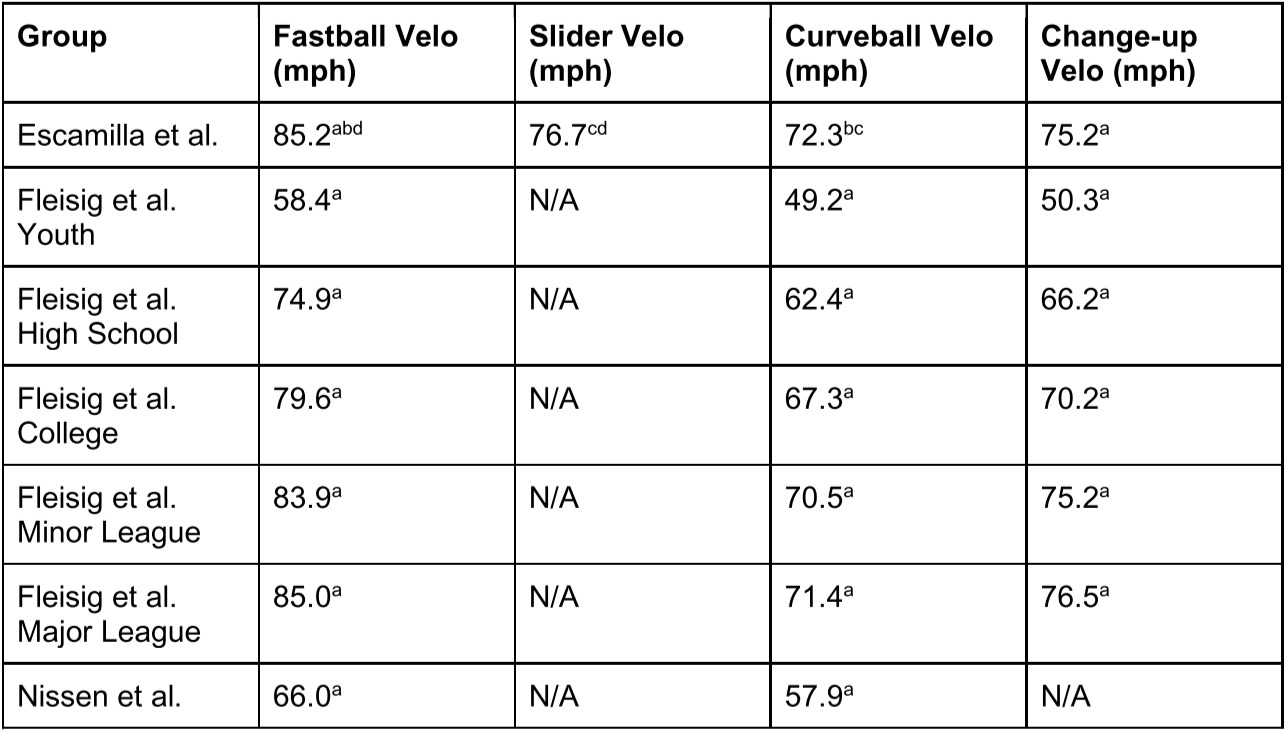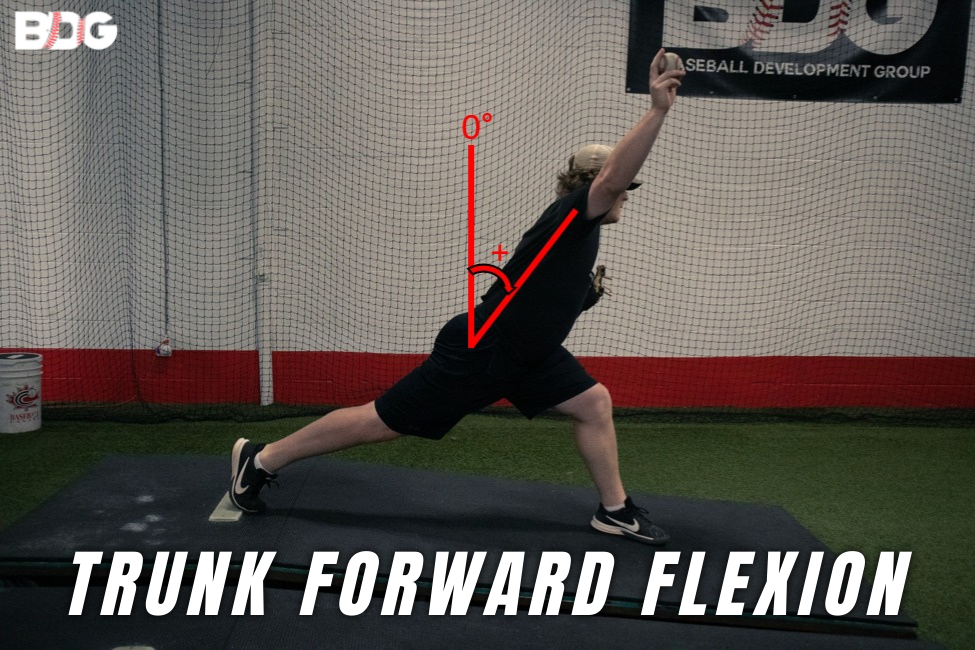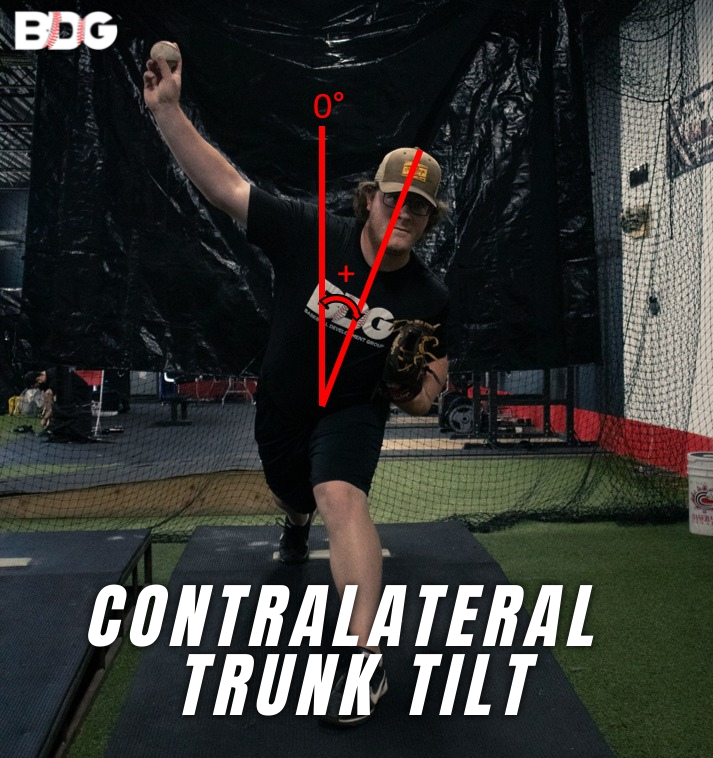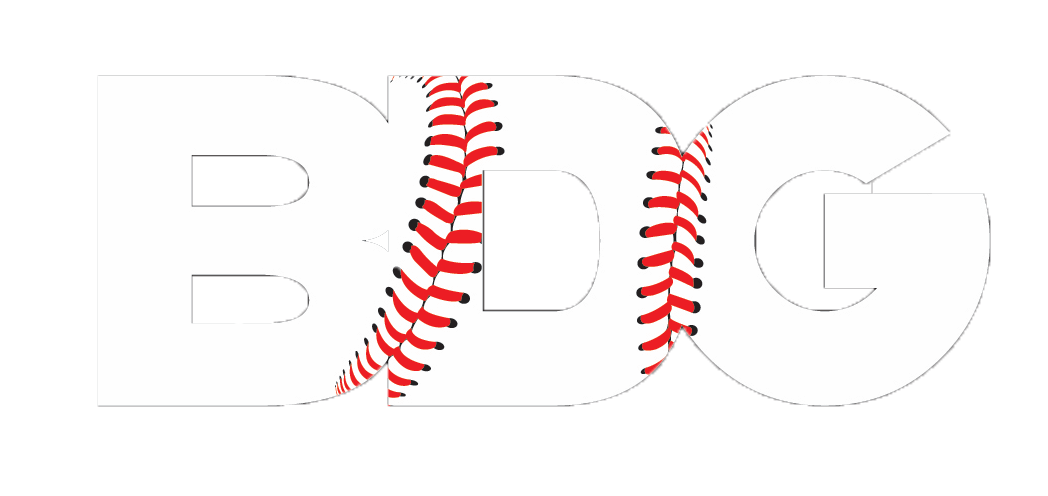Kinematic Differences Between Pitch Types: What We Know So Far
Introdution
A pitcher’s ability to throw multiple pitch types to deceive hitters is important for their success. As players develop and get older, the number of pitch types they throw generally increases from youth, through adolescence, and into adult baseball. The reasoning behind this is multifactorial (size, strength, skill, experience, and many more). One of those reasons is that curveballs were originally thought to be dangerous to throw, as altered forearm position may increase elbow injury risk. This ideology was predominant in youth baseball, as curveballs are generally not taught or allowed before the age of 14.
To evaluate potential changes in joint kinetics and kinematics while throwing different pitch types (and to critically examine the actual effects of curveballs on youth elbows), analysis using marker-based motion capture was performed. Three predominant studies on this topic are:
- Nissen et al. 2009, A Biomechanical Comparison of the Fastball and Curveball in Adolescent Pitchers
- Fleisig et al. 2016, Differences Among Fastball, Curveball, and Change-up Pitching Biomechanics Across Various Levels of Baseball
- Escamilla et al. 2017, Biomechanical Comparisons Among Fastball, Slider, Curveball, and Change-up Pitch Types Between Balls and Strikes in Professional Pitchers.
The kinetic differences between pitch types may allow insight into workload management and injury mitigation, while the kinematic differences may explain some of the difficulties in pitch tunnelling, as well as give insight into ways to generate ideal pitch profiles using kinematic cues
Methods
Nissen et al. 2009, A Biomechanical Comparison of the Fastball and Curveball in Adolescent Pitchers
In this study, there were 33 healthy pitchers with at least 2 years of pitching experience. The age range was 14 to 18 years old, with an average of 16.6 ± 1.5. The average height was 179.4 ± 6.8cm, and average weight was 76.2 ± 12.5kg.
An average of 16 pitches were thrown into a net with a designated strike zone until 3 representative fastballs and curveballs were collected. The average fastball velocity was 65.8 ± 4.8mph and the average curveball velocity was 57.7 ± 6.2mph. Kinematics were collected using a 38 marker model, and 12 synchronized Vicon 512 cameras recording at 250Hz. The data was collected and analyzed for the critical phases of the pitching cycle: foot plant, maximum external rotation, ball release, and maximum internal rotation. Locations and magnitudes of peak angular velocities of critical joints were also compared. Data from this study was predominantly focused on the throwing arm.
Fleisig et al. 2016, Differences Among Fastball, Curveball, and Change-up Pitching Biomechanics Across Various Levels of Baseball
The participants in this study were collected between 2003 and 2014, to collect a total of 133 pitchers, but only 111 were used in analysis. 26 of these pitchers were youth athletes, with an average age of 12.2 ± 1.6 years old, an average height of 158.9 ± 2.3cm, and an average weight of 48.2 ± 11.3kg. 21 of the athletes were high school pitchers, average age was 16.7 ± 0.8 years old, 183.2 ± 7.7cm, and average weight of 75.3 ± 8.4kg. Collegiate athletes were represented by 20 athletes, average age was 19.9 ± 1.0 years old, average height of 190.4 ± 6.1cm, and average weight of 94.1 ± 6.6kg. There were 2 groups of professional athletes, with one group of major league pitchers, and the other of minor league pitchers. There were 26 minor leaguers, with an average age of 21.6 ± 2.2 years old, average height of 190 ± 6.1cm, and average weight of 94.1 ± 6.6kg; and 18 major leaguers, with an average age was 22.2 ± 2.6 years old, average height of 190.8 ± 6.2cm, and average weight of 95.5 ± 8.5kg.
Pitches were recorded using a 23 marker model, and 8 motion capture cameras recording at 240Hz. Pitchers threw from a portable mound to a target strike zone at regulation distance. A minimum of 3 of each pitch type was thrown by each pitcher. Data at ball release was compared, as well as locations and magnitudes of each critical angular joint velocity. BioPitch software was used to extract the data.
Escamilla et al. 2017, Biomechanical Comparisons Among Fastball, Slider, Curveball, and Change-up Pitch Types Between Balls and Strikes in Professional Pitchers
18 professional pitchers from a single organization participated in this study. Average age was 24.0 ± 2.8 years old, average height was 190.8 ± 5.1cm, and average weight was 98.3 ± 10.3kg.
Pitchers threw between 32 and 40 pitches from a mound, and 8 to 10 of each pitch was thrown. 3 of the highest velocity balls, and 3 of the highest velocity strikes were used for data analysis. Kinematics were collected with a 38 marker model, using 18 XOS SportMotion cameras recording at 180Hz. Kinematics and kinetics were reported for each phase of the pitching cycle, and at foot plant and ball release. BioPitch software was used to extract the data.
Results
In the Nissen et al. 2009 paper, only fastballs and curveballs were compared, while Fleisig et al. 2016 and Escamilla et al. 2017 compared fastballs, curveballs, and change-ups, but Escamilla et al. went one step further and included sliders in the comparisons.
The overall results from each of these papers is as follows.
Ball Velocities

Figure 1: Pitches that share superscript letters are significantly different. Significance only for single studies.
Kinematics and Kinetics
Trunk
Escamilla et al. 2017 found that fastballs and curveballs had significantly more trunk forward flexion towards home plate (36° ± 9° and 37° ± 7°, respectively) than change-ups (31° ± 10°), but also slightly more than sliders (34° ± 9°). Fleisig et al, 2016 did not see significant differences here.

Contralateral trunk tilt was greatest in curveballs (24° ± 10°) and fastballs (21° ± 12°), but curveballs were significantly greater than both sliders (17° ± 10°) and change-ups (19° ± 11°). Fleisig et al. 2016 found similar results with fastballs (26°) and curveballs (27°) similar, but only curveballs having a significantly greater amount than change-ups (24°).
Escamilla et al. found upper trunk rotational velocity was greatest in fastballs (1080°/s ± 90°/s), then sliders (1060°/s ± 75°/s), then curveballs (1055°/s ± 85°/s), and then changeups (1025°/s ± 85°/s), however only significant difference was between fastballs and change-ups. Fleisig et al. found similar results with fastballs being highest (1098°/s), then curveballs (1055°/s), then changeups (1039°/s), with the fastballs significantly greater than both.

Lead Knee
At release, fastballs had the straightest knee angle (34° ± 15°), while sliders (38° ± 13°), curveballs (38° ± 13°), and change-ups (40° ± 14°) were similar, but the only significant differences were between fastballs and change-ups.
The change in knee angle from foot plant to ball release was also greatest for fastballs and significantly greater than change-ups. At foot plant there were no differences in knee flexion between pitch types. Fastballs changed by 8° ± 8°, sliders changed by 4° ± 7°, curveballs changed by 3° ± 6°, and change-ups changed by 1° ± 7°.

Elbow
In general, elbow varus torques were greatest in fastballs, then sliders, curveballs, and change-ups. Escamilla et al. 2017 found that fastballs averaged 96 ± 17Nm, sliders averaged 95 ± 14Nm, curveballs averaged 92 ± 18Nm, and change-ups averaged 88 ± 11Nm. Fastballs and sliders were both significantly greater than change-ups. Fleisig et al. 2016 found similar relationships as fastballs (71.5Nm) had increased elbow varus torque compared to curveballs (67.4Nm) and change-ups (63.1Nm), but were only significantly greater than change-ups. Nissen et al. 2009 also had similar findings as fastballs (59.6 ± 16.3Nm) had significantly higher elbow varus torque than curveballs (54.1 ± 16.1Nm). These findings will be discussed further down and are a point of interest for future data collections regarding differences in kinematics and kinetics between pitch types.
Elbow extension velocity was generally fastest in fastballs but was variable across the studies for curveballs. Nissen et al. 2009 found no significant differences between fastballs (1925 ± 354°/s) and curveballs (1841 ± 291°/s), however there was a significant difference between the timing of peak elbow extension velocity. Timing metrics were reported as a normalized percentage of the pitching cycle with 0% being foot plant and 100% being ball release. Curveballs had later peak elbow extension velocity, occurring at 74 ± 5% of the pitch cycle, than fastballs at 70 ± 8%. Fleisig et al. 2016 found significant differences between fastball peak elbow extension velocity (2317.6°/s), and curveball (2226.2°/s) and change-up (2141.8°/s) peak elbow extension velocities. This may be partially explained by fastballs having a straighter elbow angle at release (25.8°) than both curveballs (27.2°) and change-ups (29.3°); fastballs were significantly different than change-ups. Escamilla et al. 2017 found no significant differences in peak elbow extension velocity, or the timing of peak elbow extension velocity, or elbow angle at release.
Shoulder
In general, shoulder internal rotation velocities were greatest in fastballs and curveballs, then sliders, and change-ups. Escamilla et al. reported fastball shoulder internal rotation velocities of 6715 ± 760°/s, sliders at 6690 ± 565°/s, curveballs at 6705 ± 700°/s, and sliders at 6275 ± 715°/s. Fastballs and curveballs were significantly greater than both sliders and change-ups. Fleisig et al. 2016 found very similar results, as fastballs (6957°/s) were significantly different than both curveballs (6616°/s) and change-ups 6246°/s). Curveballs and change-ups were also significantly different from each other. Nissen et al. 2009 also found significant differences between fastball (3619 ± 656°/s) and curveball (3409 ± 722°/s) peak shoulder internal rotation velocities, however they were the only study that reported significant differences in peak shoulder internal rotation velocity timing between fastballs (77 ± 8%) and curveballs (81 ± 4%).
Pelvis
The only study to report pelvis kinematic data was Escamilla et al. 2017. They found that fastballs had the fastest peak pelvis angular velocity (540 ± 100°/s), followed by sliders (520 ± 20°/s), curveballs (505 ± 95°/s), and change-ups (500 ± 100°/s). Fastballs were significantly faster at peak pelvis rotational angular velocity than curveballs and change-ups. There were no significant differences between peak pelvis angular velocity timings across pitch types.
Discussion
Considering the velocity differences across pitch types, as well as ideal spin metrics for each pitch type, these combined results may explain some of the differences in pitch outcome metrics.
In terms of pitch velocity, fastballs had the fastest trunk rotational velocity, fastest shoulder internal rotation velocity, fastest pelvis rotational velocity, most forward trunk tilt, most lead knee extension at ball release, and also most range of motion used in the lead knee. Each of these metrics has been at least somewhat linked to influencing pitch velocity, but some of the greater predictors are shoulder internal rotation velocity, and trunk rotational velocity. The effect of arm/hand speed on spin rates of each pitch have not been thoroughly investigated, so the slower angular velocities seen in offspeed pitches are not fully understood yet.
Similar to pitch velocity, elbow torques were highest for fastballs and followed a similar trend to velocity as it decreased from fastballs, to sliders, then curveballs and change-ups. These differences may be accounted for considering the trends mentioned above with less segment and joint angular velocities for offspeed pitches. The orientation of forearm pronation and supination for fastballs and offspeed pitches has been investigated, and it was found that fastballs were generally less supinated (-3 ± 14°) than curveballs (-20 ± 14°) (Nissen et al., 2009). This forearm orientation has not been fully investigated in terms of which postures may increase or reduce stress on the medial compartment of the elbow, however Pomianowski et al., 2001, found that medial elbow laxity was greater in pronated postures than supinated. This may cause curveballs to not be as dangerous as originally anticipated, however there may be other mechanisms at play increasing injury risk with breaking balls.
When considering ideal spin profiles for fastballs, sliders, curveballs, and change-ups, the trunk kinematics at release may explain some effect of arm angle on pitch spin axis. For fastballs and curveballs, the trunk had more lateral tilt. This would generate a more vertical forearm angle at release, creating a more advantageous position to get closer to a horizontal spin axis, 12:00 spin direction on fastballs, and 6:00 spin direction on curveballs. Sliders and change-ups had less lateral trunk tilt, which may result in a lower arm angle. This arm slot would be more advantageous to generating the ideal slider profile with spin direction of 8-9:00 and less spin efficiency than the fastballs and curveballs. Change-ups may also benefit from the lower arm slot as a vertical spin axis would be easier to generate, allowing for a spin direction around 3:00.
In general, some pitchers may have more advantageous mechanics and arm slots to throw high vertical break fastballs and curveballs, or high horizontal break change-ups and sliders. This is important to take into consideration when developing pitches and working on pitch spin and movement profiles, as it may be unrealistic for some pitchers to generate more vertical break on their slider by generating a more topspin profiling slider if they have a lower arm slot. Similarly, pitchers with a higher arm slot may struggle to develop more horizontal break on their curveball or change-up due to their more natural horizontal spin axis.
Future Research
The research that has been done to date has defined some very interesting differences between pitch types, however there is still plenty more to be discovered. We plan to attempt to replicate these results and further investigate the differences in kinematics, kinetics, and kinematic sequence timing, as well as pitch characteristics using PitchAI and Rapsodo. Using PitchAI’s arm speed metric, we will also be able to compare arm speed, pitch velocity, and spin rates across pitches. The goal of our research will not only be to further the kinematic and kinetic data between pitch types, but also to investigate coaching methodologies that may induce changes to benefit development of better secondary pitches.
